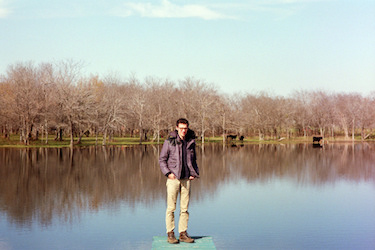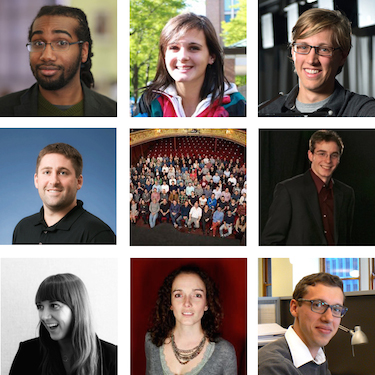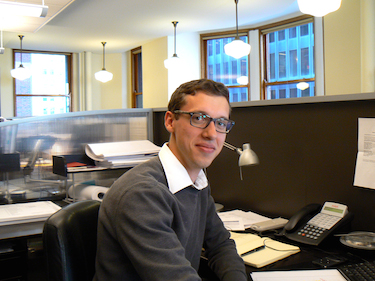Title: Consultant
Company: Threshold Acoustics
Location: Chicago, IL
Certifications: CTS-D
Why You Need to Know Him: He actually understands how the human brain responds to sound. Like, he quantified it in his graduate work at Rensselaer Polytechnic Institute by computationally simulating the human auditory system and feeding it audio files. His results were presented at the Acoustical Society of America, and yeah, ideas like that could change how we measure room acoustics and make them more relevant to human perception.
Wait, So How Did This Start? Perez has in his South Florida upbringing the familiar architectural acoustics and AV designer background elements of an electrical engineer father and a family that loved music. Except this kid was nine years old when he read his dad’s college thesis on electronic music, and it was more about the soul of sound rather than math. “He looked at all the angles of musical expression and creativity,” he recalled. So, even while Perez entertained some brief notions of musical fame, “I had a backup plan,” in a career that combined technology and music.
Brains and Brawn: Don’t just assume that because Perez is smart, he was the alpha member of his high school theater tech crew. No, he wasn’t the domineering guy running the lighting board, he was the quiet soul who could be found backstage, making things appear out of the sky. “I liked to be at the fly rail, adding weights. Those aspects of it, like setup and tear-down, I enjoy the tedious labor of it.” (Insert joke about how that will help with punch lists here.)
Then I Fulfilled Another One of my Boyhood Dreams: “I learned how to operate a forklift.” Here again, Perez defies expectation. Having earned a degree in electrical engineering with an emphasis on audio at the University of Miami, he knew that it was the intersection of music and technology that interested him far more than circuit design. So he found a graduate program in architectural acoustics at chilly RPI in upstate New York and started building that computer brain while working a part-time job stocking shelves on the night shift at Home Depot. The late-night crew didn’t have to wear those lame orange aprons, and Perez liked the theater-tech vibe of a bunch of people roaming around an empty store at night. Look out, to this day, Perez says “it’s really tempting to jump onto the forklift when I see one at Home Depot.”
“Local Boy Creates CAD Blocks:” Then Perez did something kinda musician-y. He went to Chicago and signed a one-year lease on an apartment, knowing full well that he only had a four-month internship at Threshold Acoustics. “I didn’t have a backup plan,” he says, laughing, even though we all know he really could have driven forklifts for a living. Then a funny thing happened, and Perez made a really good impression as an intern, but his legacy from that time period is a strange one. Helping to produce documents for AV system designs, he decided to make his CAD work a bit easier by developing a bunch of dynamic blocks that would streamline design company-wide. Now, almost four years later and with brawny projects like Northwestern University’s Kellogg School of Management, Ravinia, the Paramount Theatre and Symphony Center, and the University of Iowa’s Hancher Auditorium under his belt, Perez still gets regular pats on the back for those CAD blocks. “Apparently I’ve yet to produce an earth-shattering audio system design, but this CAD thing, it sealed the deal for me.”

It Goes to Show Ya: It’s probably a good idea to be good at heavy lifting and more cerebral pursuits, just so you have a backup plan. Luckily, Perez likes melding his creative and technological skills as an AV and acoustics designer at Threshold. “Looking at an audio system design, it’s mentally gratifying to see an abstraction of a real thing and try to understand what it means in reality before you actually work with it in its physical form. To be presented with a problem and have to work your way into a solution, and keep all these factors in mind, that’s the challenge I enjoy now in AV design,” he said. Sounds kinda like his computational simulation of the human auditory system, right? Someone should let him use that more often.
Get to know the rest of The Nine

